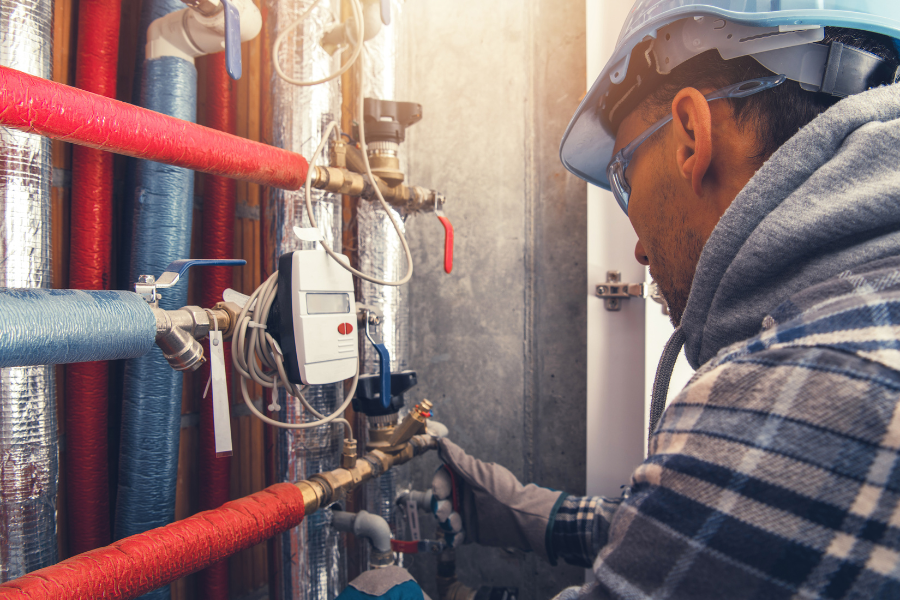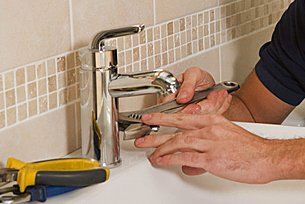Examining Plumbing's Next Chapter: Patterns and Breakthroughs
Free QuoteAlmost everyone has his or her own opinion when it comes to The Future Of Plumbing: Trends And Technologies To Watch.

Intro
The pipes industry is undergoing a transformative phase driven by technological improvements and expanding problems for sustainability and efficiency. This article checks out emerging trends and innovations shaping the future of plumbing.
Smart Plumbing Systems
Incorporating wise innovation right into pipes systems makes it possible for remote surveillance, leakage discovery, and automated upkeep. Smart sensing units and IoT (Web of Points) tools permit home owners and plumbers to monitor water use and identify concerns in real-time, resulting in much more efficient resource monitoring and aggressive upkeep.
Water Effectiveness Solutions
With enhancing focus on water conservation, innovative solutions are being created to lessen water waste in plumbing systems. High-efficiency components, greywater recycling systems, and clever watering controllers are among the technologies aiding customers decrease their water footprint while keeping comfort and comfort.
Sustainable Products
The shift towards sustainability includes plumbing products, with a growing preference for eco-friendly choices. Naturally degradable piping materials, such as PEX (cross-linked polyethylene) and HDPE (high-density polyethylene), deal sturdiness and resistance to corrosion without endangering environmental honesty.
Predictive Maintenance
Predictive maintenance techniques leverage data analytics and artificial intelligence formulas to prepare for and prevent pipes issues prior to they take place. By analyzing historical information and performance metrics, predictive maintenance algorithms can identify patterns and anomalies, making it possible for proactive treatments to avoid expensive repairs and disruptions.
Enhanced Fact in Plumbing
Enhanced Fact (AR) technology is reinventing pipes by supplying technicians with real-time visual advice for troubleshooting and repair service jobs. AR-enabled smart glasses or mobile applications overlay digital details onto the physical environment, assisting plumbing professionals visualize pipe designs, determine surprise leaks, and carry out fixings with accuracy.
Impact of 3D Printing
The introduction of 3D printing has presented brand-new opportunities in manufacturing plumbing components. From custom-designed fixtures to complex pipeline installations, 3D printing enables fast prototyping and on-demand manufacturing, reducing lead times and enabling greater customization in plumbing design.
Health and Safety Characteristics
In action to increased worries for health and wellness, plumbing fixtures are incorporating features such as antimicrobial surfaces, touchless operation, and self-cleaning mechanisms. These developments not only enhance health however likewise promote individual comfort and benefit.
Hygiene-focused Fixtures
Touchless taps, self-sanitizing bathrooms, and antimicrobial surfaces are becoming increasingly widespread in residential and business setups, reducing the risk of bacterium transmission and advertising a cleaner, healthier setting.
Water Quality Surveillance
Improvements in water high quality monitoring modern technologies allow property owners to monitor the pureness and security of their water supply in real-time. Smart water quality sensing units can discover impurities, pH degrees, and temperature variations, empowering customers to take positive measures to guarantee water security.
Remote Plumbing Solutions
Remote diagnostics and digital assistance are reinventing the way pipes solutions are provided. Via video conferencing and remote access innovations, plumbings can repair problems, provide advice for DIY fixings, and even do remote evaluations, supplying greater access and benefit to home owners.
Challenges and Opportunities
While pipes technologies hold immense pledge, they also present difficulties such as information privacy issues, governing conformity, and the need for workforce training. Attending to these obstacles requires partnership in between industry stakeholders and regulative bodies to make certain safe and responsible application of brand-new modern technologies.
Governing Landscape
Regulatory frameworks play a vital duty fit the fostering of pipes technologies, with standards and codes governing everything from water efficiency to product safety. As technologies continue to evolve, regulative bodies should adapt to guarantee consumer protection and environmental stewardship.
Future Outlook
The future of plumbing is identified by proceeded technology and assimilation with various other fields such as IoT, renewable resource, and building automation. By accepting sustainable practices, leveraging arising modern technologies, and focusing on user-centric style, the plumbing sector is positioned to attend to the developing needs of society while decreasing its ecological footprint.
Conclusion
Finally, the future of pipes is defined by a merging of modern technology, sustainability, and user-centric style. By embracing clever options, sustainable materials, and aggressive maintenance techniques, the pipes industry can boost effectiveness, promote safety and security, and contribute to a more lasting future.
Plumbing Industry Trends You Need To Know
Smart technology in plumbing
Homeowners want to be able to manage their homes from their phones. The technology exists to make that happen. From smart toilets to leak detector devices, the whole plumbing system can be managed on an interconnected network made up of sensors, IoT devices, and machine learning algorithms.
This allows for wireless control to turn appliances on and off, automate routines, and access advanced monitoring to track water usage and flag potential issues. Smart technology streamlines water consumption, maintenance and energy usage, creating a more efficient system.
Green plumbing
The data analysis possible with smart technology not only improves convenience and cost-effectiveness but also fulfills a high-priority customer desire – sustainability. Consumers are very aware of their impact on the planet and want plumbing solutions to reduce damage and support sustainability. Eco-friendly plumbing solutions are already starting to emerge.
Customers can opt for low-flow toilets, water-saving faucets, and connections to sustainable energy sources. Beyond monitoring water consumption, customers can conserve water through the installation of greywater systems. This is a system that collects water that has been used but is still clean enough for some household uses such as toilet flushing.
Shorter product pipeline
To keep up with modern plumbing, plumbers need modern tools that enable them to complete jobs more efficiently. One technology making strides in this area is 3D printing. By 3D printing key plumbing fixtures, plumbers can reduce wait times even for specialized fixtures. It minimizes delays often seen in traditional manufacturing that frustrate customers and prevent plumbers from taking on more work.
Off-site repairs
Augmented reality is making a splash in many industries including plumbing. Plumbers can map a building online so they can explore the plumbing system through augmented reality, identifying areas of maintenance and repair completely digitally. This technology can be applied quite widely in plumbers’ work including planning installations and training new recruits. It’s safer, smarter and more efficient.
Low-footprint materials
Another way for plumbing companies to reduce their environmental footprint and meet the customer demand for sustainability is by using recycled materials in their work. The products they source and manufacture such as pipes, fixtures and faucets can be made from recycled materials. This saves the planet while being just as effective.
Onsite water purification
Additionally, plumbing companies can be advocates of water conservation and ease the financial and environmental concerns of customers by offering water purification systems. New water purification technology such as reverse osmosis systems and UV systems make it possible for homeowners and business owners to thoroughly cleanse water, removing contaminants onsite. This means the water can be safely reused in more ways than greywater can be, establishing a water recycling loop.
Tankless water heaters
Another innovation of modern plumbing is tankless water heaters. The idea is that the water is heated on demand as it runs through the system instead of being heated in a water tank. This is more energy efficient and therefore cost-effective and eco-friendly because water isn’t heated needlessly.

I found that blog entry on The Future of Plumbing: Trends and Innovations to Watch while browsing on the web. Those who enjoyed reading our blog entry if you please remember to share it. Thanks for taking the time to read it.
Click Here